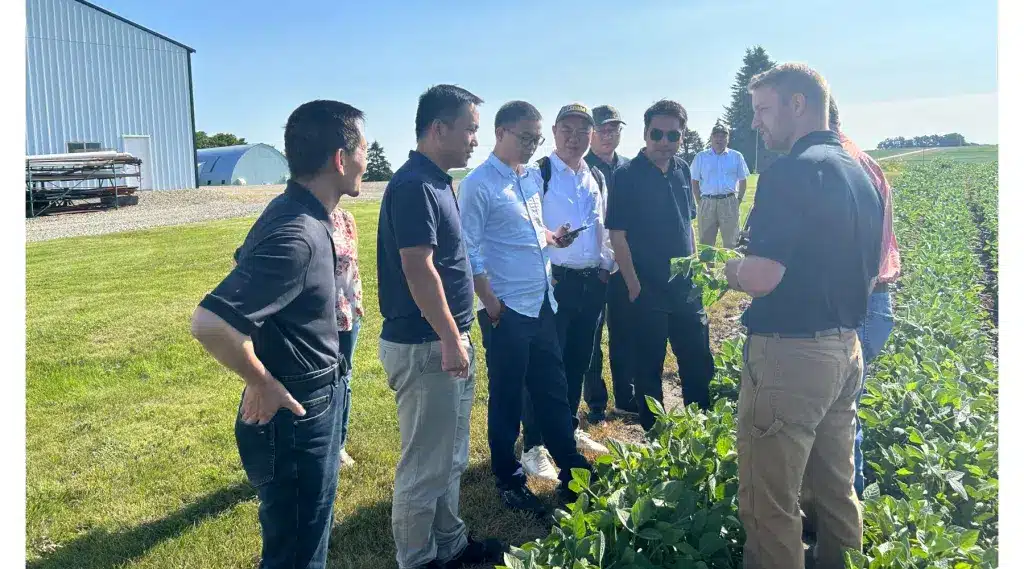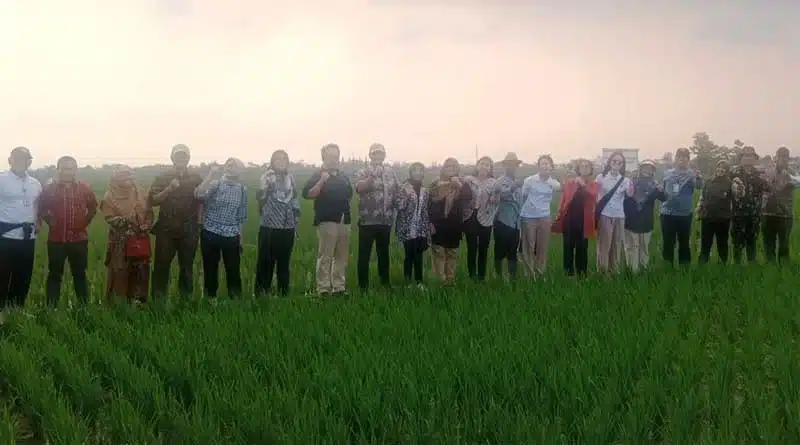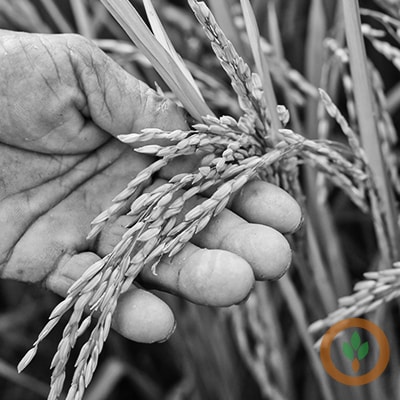Tags
Climate change, chalky grains and the risks for Japan’s rice farmers

A farmer plants seedlings in Satsumasendai, Kagoshima Prefecture. Japan’s self sufficiency rate for rice is nearly 100%, compared with 38% for food overall, on a calorie basis. | REUTERS
As Japan’s rice farmers prepare for a new planting season, many will be hoping that this summer brings a reprieve from 2023’s brutal weather conditions.
Niigata Prefecture, for example, typically known as Japan’s leading rice-growing region, had one of the poorest rice harvests in the country last year.
“Extreme heat and low rainfall led to chalky or split grains,” laments Toru Tanabe, an official with the city of Agano. He stresses that the drop in rice grade did not correspond to a drop in taste but nonetheless many are concerned that Japan’s increasingly scorching summers could have a negative impact on yield and quality.
Harvests on Nagasaki Prefecture’s Tsushima island have also included more chalky grains than usual due to the heat, and farmers expressed concern about how their customers would react. “Will they think ‘This year’s rice is weird?’” says Yu Arikawa, a member of an ecologically minded farmers’ group on the island.
Last year was Japan’s hottest on record, contributing to a record-low harvest of top-quality rice.
Such blistering summers are becoming more and more likely as global warming progresses; Japan has seen a trend of consistently high temperatures in recent years, with 2019 to 2023 ranking as the top five hottest years in recorded history. Against this backdrop, Japan’s administrators and researchers aim to understand the impacts that warming will have on rice crops and the implications for the country’s food security.

An experiment in Tsukubamirai, Ibaraki Prefecture, in which carbon dioxide is artificially increased in paddy fields under outdoor, unenclosed conditions in order to better understand the physiological responses of crops in a high carbon dioxide environment, which is expected in the future. | NATIONAL AGRICULTURE AND FOOD RESEARCH ORGANIZATION
Although experts say it is unlikely that climate change will cause a dangerous shortage in Japan’s overall rice supply, extreme heat still threatens to lower grain quality and — by extension — farmers’ income.
That’s forcing farmers to adapt, with the widespread introduction of heat-resistant rice varieties seen as key to preventing damage from global warming. But a key question remains: Will consumers follow along?
Lower quality, lower income
Food security — the ability of all people to have physical and economic access to sufficient, safe and nutritious food — is falling globally in large part due to the effects of rising temperatures and extreme weather events brought on by climate change.
Rice is the cornerstone of food security in Japan, according to the agriculture ministry. Today, Japan’s self sufficiency rate for rice is nearly 100%, compared with 38% for food overall, on a calorie basis. As such, the ministry calls adaptation measures to protect rice harvests from the impacts of climate change “indispensable,” even though it has taken steps to head off short-term disruption.
“In terms of food security, we will basically be OK even in the event of a disaster, because the government maintains rice reserves,” explains Ryuhei Kanda, deputy director of the Cereal Crop Division with the ministry’s Crop Production Bureau.
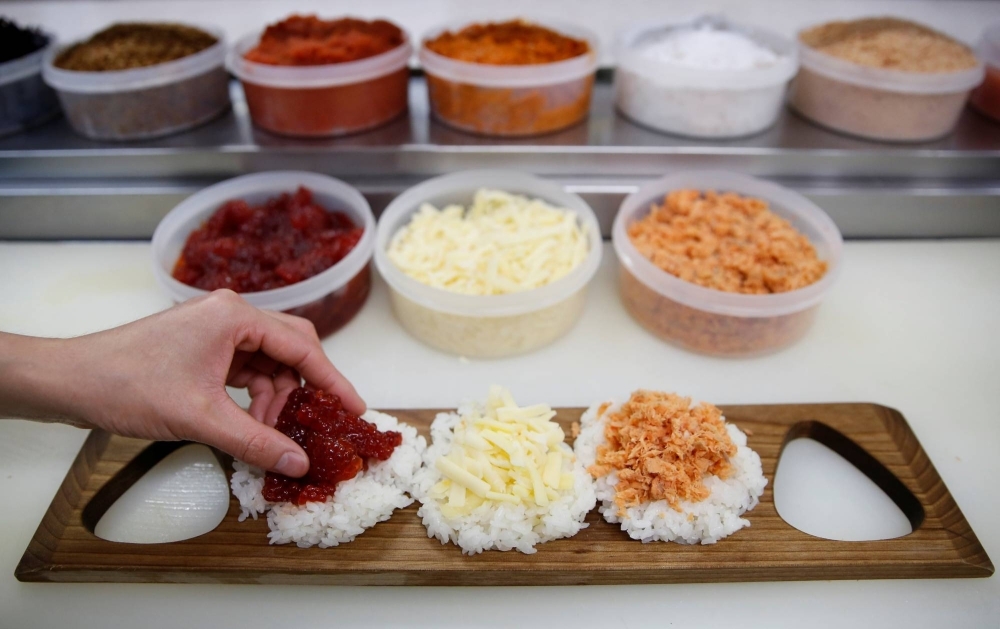
An employee at a restaurant in Tokyo makes rice balls. | REUTERS
The nation is no stranger to weather having a major impact on rice production.
In 1993, an unusually cool summer slashed Japan’s rice harvest by roughly a quarter, burning through the government’s then-400,000 metric tons of rice reserves and prompting emergency imports. Based on that experience, the government now stocks 1 million metric tons of rice, equivalent to roughly 14% of the annual volume of rice consumed in Japan in recent years, Kanda said. Private entities also have a further 1 million to 3 million metric tons of rice across their inventories.
Ironically, elevated concentrations of atmospheric carbon dioxide — a greenhouse gas — may actually increase crop yield in some locations. In 2018, researchers from the National Agriculture and Food Research Organization (NARO) estimated that Japan’s total rice yield may increase by roughly 20% by 2060-2080 because of carbon dioxide’s “fertilizing effect” on plants.
However, in 2021, they revised down their predictions based on new data.
“Our experiment results indicate that, as air temperature increases, the positive effects of higher CO2 concentrations on grain yield steadily decrease,” says Toshihiro Hasegawa, a co-author of both reports and an executive scientist in NARO’s Institute for Agro-Environmental Sciences.
A number of other factors, including humidity, affect rice yield too. It is important to have a detailed understanding of the meteorological conditions impacting rice yield and quality in each region, in order to identify high-risk “hot spots,” Hasegawa notes.
Although warming may not leave supermarket shelves bare in the near future, it can seriously impact rice quality.

A farmer using a rice planting machine transplants rice in Ryugasaki, Ibaraki Prefecture. Rice is the cornerstone of food security in Japan, according to the agriculture ministry. | REUTERS
In particular, sustained higher temperatures during the early ripening period can cause rice grains to take on a chalky white appearance — as the Agano and Tsushima farmers experienced — which can lower their value. Chalky grains are fragile, leading to increased loss during milling, and are considered less palatable by some (the agriculture ministry maintains that using a little less water in your rice cooker will make chalky grains taste better).
Still, a quality drop from first-grade to second-grade rice could mean a farmer loses nearly 10% of their income, according to Yuji Masutomi, head of the Asia-Pacific Climate Change Adaptation Research Section in the Center for Climate Change Adaptation, National Institute for Environmental Studies.
“That’s a huge blow,” Masutomi says. “For farmers, climate impacts present a big problem.”
One thing individual farmers can do is insure themselves against climate-related crop damage. However, overall economic losses may be significant: In a 2019 paper, Masutomi and colleagues reported that roughly one-third of rice paddies in Japan could experience a decrease in grain grade by the 2040s if greenhouse gas emissions are not reduced, leading to an annual economic loss of $401.4 million.
Increased levels of atmospheric carbon dioxide have also been found to make rice less nutritious, decreasing levels of protein, minerals, and vitamins.
“In Japan’s case, we currently obtain nutrients from various crops and foods, so it is unlikely that (less nutritious rice) will cause nutrient deficiencies,” Hasegawa says. However, this could be a serious problem for countries that rely more heavily on rice for their nutritional intake, he added.
Race against time
Across Japan, various adaptation measures are being implemented to minimize the impact of global warming on rice crops.
Modeling by an international team of researchers found that choice of rice variety is the adaptation method most likely to help prevent large yield losses. As of 2022, heat-resistant rice varieties constituted roughly 13% of rice grown in Japan by area, according to agriculture ministry data, with the three most common varieties being Kinu-musume, Koshi-ibuki, and Tsuya-hime. The government aims to increase heat-resistant varieties’ share to 18% by 2026, although it hasn’t set a further goal beyond that point.
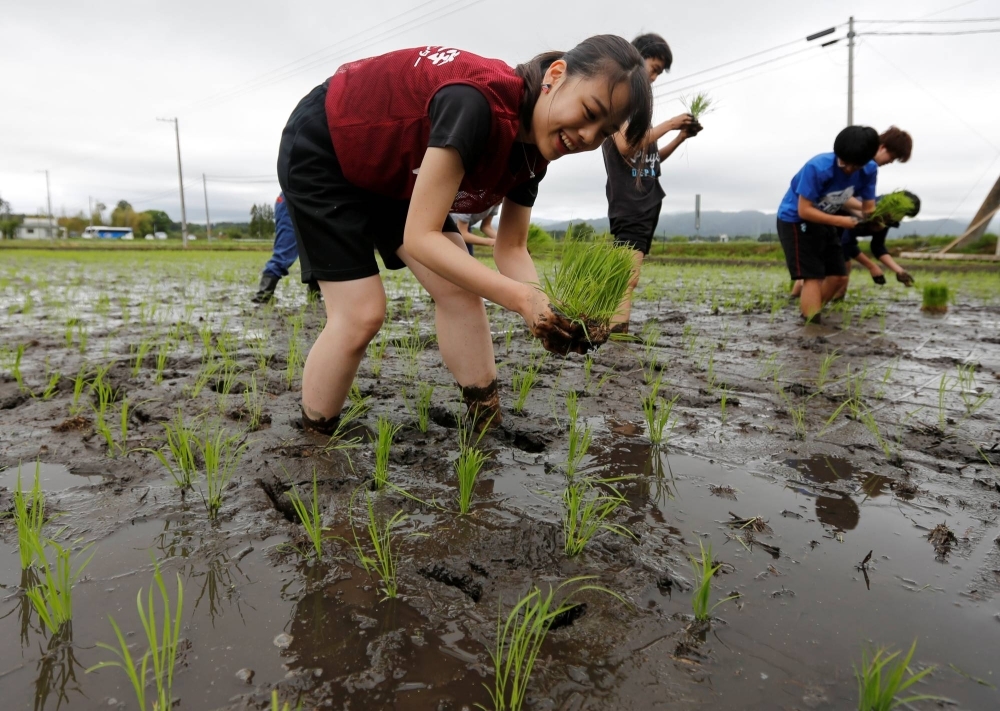
Tourists from Tokyo universities plant rice seedlings in a paddy near the tsunami-crippled Fukushima No. 1 nuclear power plant during a rice-planting event in Namie, Fukushima Prefecture, in 2018. | REUTERS
In 2022, Masutomi and colleagues reported that rice varieties tolerant of temperatures up to 3 degrees Celsius higher should be introduced until 2040, especially in the coastal areas of western and eastern Japan, which are predicted to be more heavily impacted by rising temperatures.
“As breeding a new variety is generally expensive and time consuming, it is essential to develop long-term plans,” they wrote. Currently, it takes roughly 10 years to develop and test a new variety, although genetic analysis and modification could shorten the process in the future.
It’s consumers, though, who hold the key to heat-resistant varieties’ success.
“The question is, will consumers want to buy them?” Masutomi says, noting the brand power that nonheat-resistant varieties, like Niigata-grown Koshi-hikari, currently enjoy. “If a heat-resistant variety isn’t selling, the price will be low, and farmers won’t want to grow it.”
The Tsushima rice farmers group started growing a heat-resistant variety, Natsu-honoka, but not for its heat-resistant properties. Natsu-honoka matures relatively quickly, allowing the farmers to harvest their crops before the September-October typhoon season begins, Arikawa said.
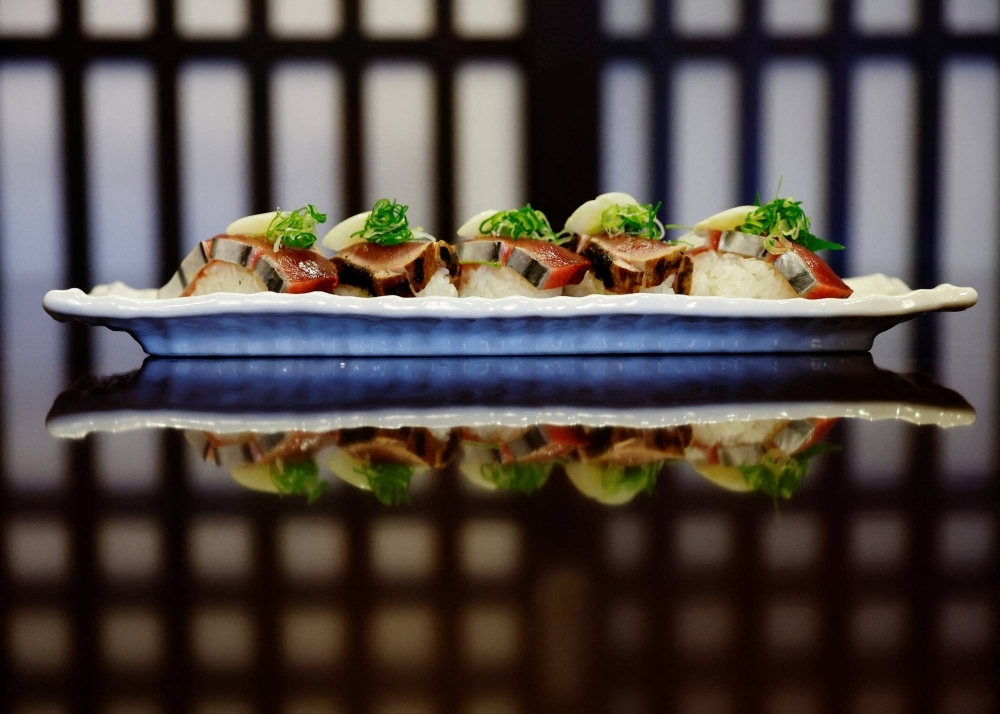
A plate of sushi at a restaurant in Kochi Prefecture | REUTERS
Despite its heat-resistant properties, the farmers’ 2023 crop of Natsu-honoka still developed chalky grains. Simply introducing such varieties evidently doesn’t mean that farmers can grow the grain worry-free.
“Typhoons, heat waves, cool summers — our farmers see these phenomena as a natural part of farming, rather than specifically as effects of climate change, and they respond to the varying conditions year to year,” Arikawa notes.
Whether farmers view high temperatures as an impact of global warming or simply the weather they have to live with, a number of other measures can be implemented to protect rice crops from summer heat, though none are silver bullets.
For example, new technologies can be used to analyze weather patterns and monitor field conditions. Although the price of such monitoring technology might be too steep for family-run farms, the national government provides funds to support such efforts.
Moving planting or harvesting times is another way farmers can try to avoid heat damage. Arikawa also noted that Tsushima rice crops have been ready to harvest roughly a week earlier than usual in recent years.
Running water through the paddies can also help cool them, but water usage is usually governed by inflexible rules, says Masutomi.
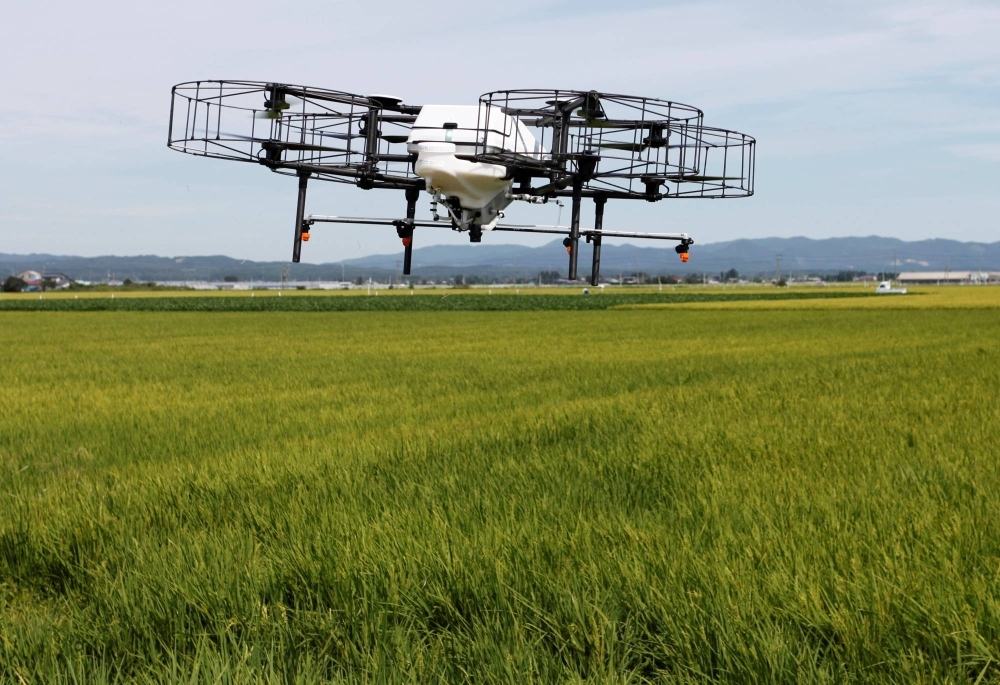
An automated drone flies over rice plants, spraying pesticide while diagnosing growth of individual rice stalks, during a demonstration in Tome, Miyagi Prefecture, in 2018. Although the price of rice monitoring technology might be too steep for family-run farms, the national government provides funds to support such efforts. | REUTERS
Another option is to give rice plants additional fertilizer in exceptionally hot summers.
“Chemical fertilizers work faster (than organic ones), so it’s better to use them” in this case, Kanda said. However, “in order to ensure sustainable agriculture in the long term, we should make an effort to reduce reliance on chemicals through measures such as heat-resistant varieties and prediction systems,” he added. Currently, the government aims to achieve 25% organic farming by 2050.
But a big question remains: If farmers and their stakeholders do implement these adaptation measures, will it be enough to protect Japan’s rice crops against global warming?
The answer, according to Hasegawa, depends on future greenhouse gas emissions.
“Global warming is progressing too quickly, and it’s becoming really difficult to adequately respond,” he says, noting that there is a limit to what current adaptation measures can achieve. “If, while adapting to global warming, we don’t also continue our efforts to limit it, there will be no way to avoid damage.”
https://www.japantimes.co.jp/environment/2024/04/28/climate-change/rice-climate-change-risk/Published Date: April 28, 2024





